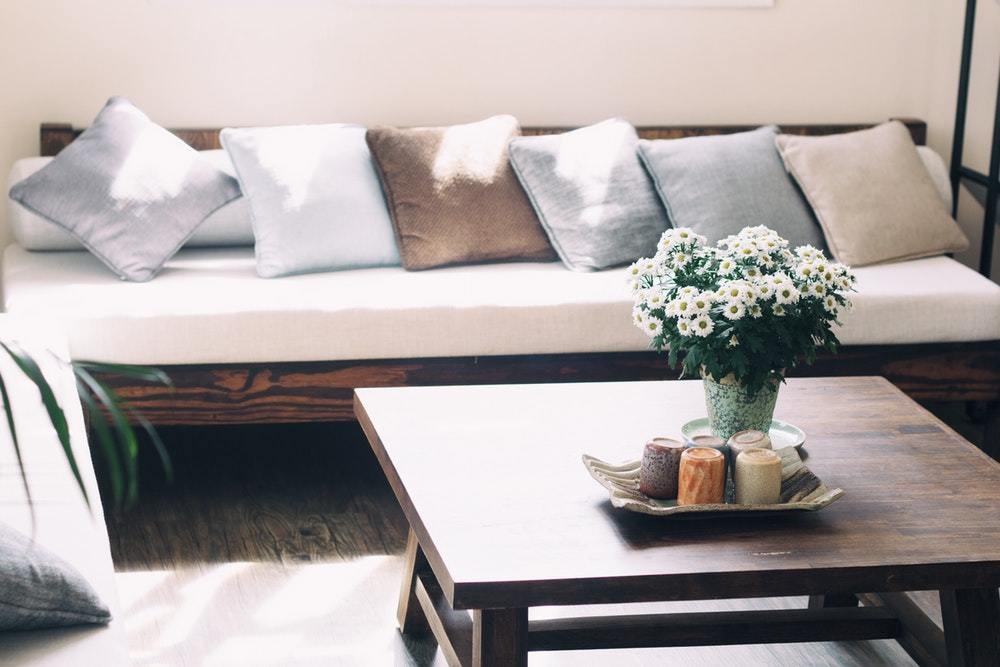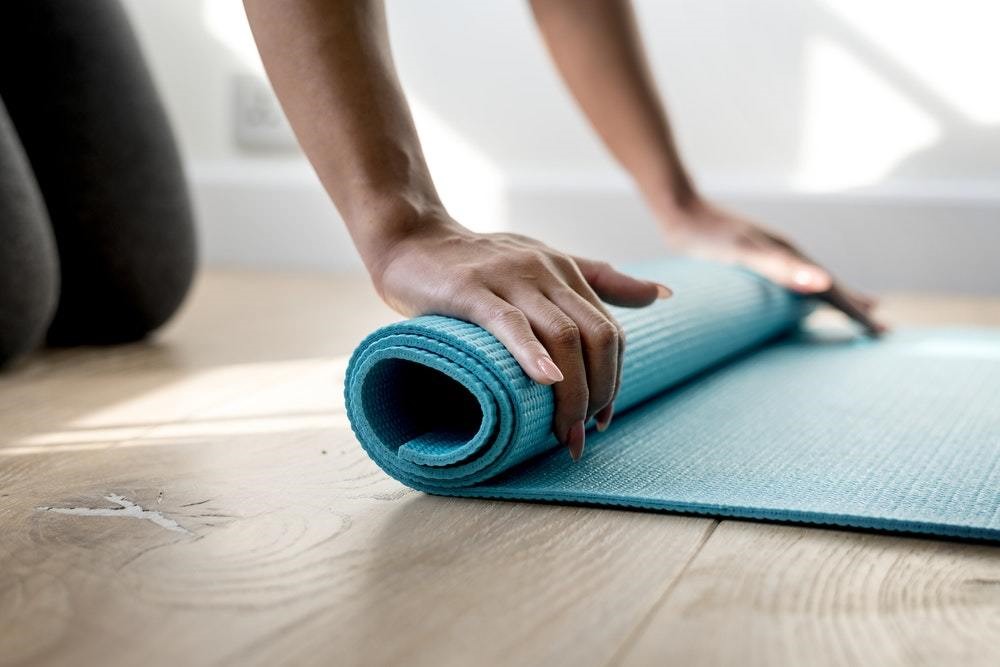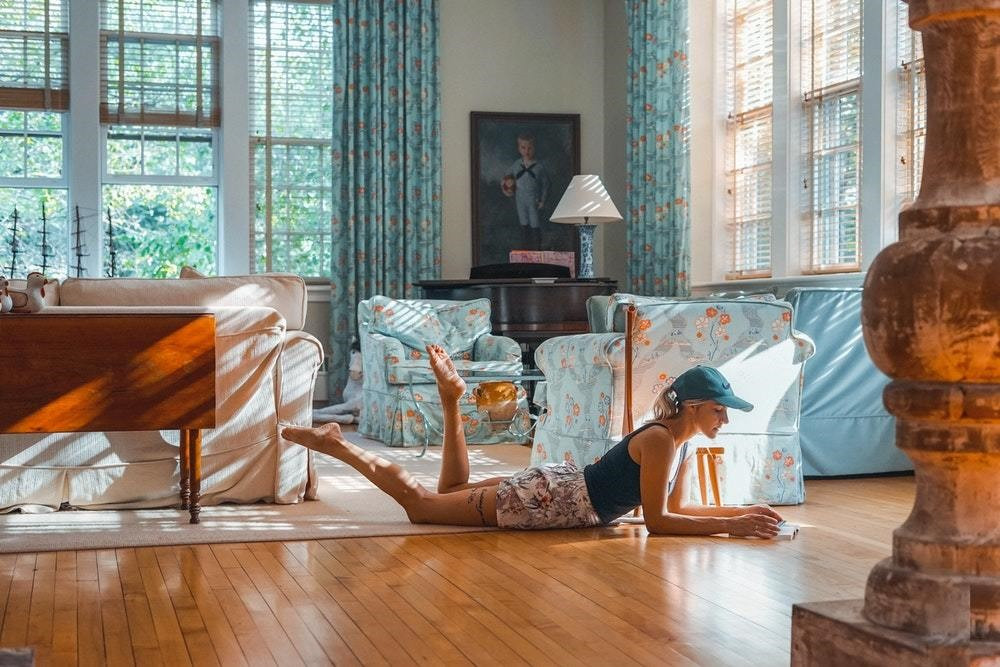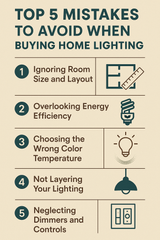The Latest Interior Design Trend: Screen-Free Zones
When it comes to technology, trends come and go. We went from thick, blocky television and computer screen monitors to ones that are literally paper-thin. We went from wired phones, to wireless phones, and then to smartphones that allow us to access the Internet, use social media, and play games. Technology has developed incredibly over the past few decades alone.
However, the more we are exposed to technology – as much as it makes our lives easier – we come across new problems. Eye-strain, migraines, and sleep problems from looking at our screens too long are common issues. Tendonitis, carpel tunnel, and neck pain are also not uncommon with overuse of technology.
But for many of us, it’s not always the physical problems that are the issue; sometimes it’s the increase of stress, anxiety, and hyperactivity technology might cause for us.
Fortunately, an interior design trend that has been popular for some time, but is still fairly new to many, are screen-free zones. Let’s talk more about these and their role in interior design.
What Is a Screen-Free Zone?
Screen-free zones are exactly what they sound like: no screens allowed! For many, a screen-free zone might mean different things. For some, this zone might simply be a room in the house that doesn’t contain a television or computer. Others might consider a screen-free space to ban all electrics – even phones, music players, and tablets.
Regardless of how you view a screen-free zone, the purpose behind them is to provide peace, simplicity, and grounding. Think of screen-free rooms similar to a back-to-basics type of approach.

Some of the following are reasons why one might want to add a screen-free zone to their home:
- To get themselves and their household members to communicate more at the dinner table
- To create a healthier balance of technology use in their home
- To save energy – whether it be for the Earth or for more affordable bills
- To live life at a slower, simpler pace
- To be more peaceful and calm
- To sleep better at night
- To give the eyes a rest
- To create time and energy to focus on other things that are more important in life (e.g., school, work, activities, relationships, etc.)
- To eliminate toxicity from their lives (e.g., Internet gossip, arguments on social media, jealousy from friends’ or frienemies’ social media posts, body shame online, etc.)
Ways To Create a Screen-Free Zone
While creating a screen-free zone might seem self-explanatory, there are dozens of ways this can be attempted. Additionally, for many people, creating a screen-free zone requires adding an alternative form of entertainment to add to the energy of the space. Otherwise, some individuals might find their screen-free space boring and lifeless.
Here are some tips on creating your screen-free zone:
Add Visual Stimuli
If you tend to feel fatigued and lethargic when you can look at your television or phone screen at least once every half hour or so, replace that stimuli with something visual. Add wall art, bright colors, or fun prints to your screen-free zone if you must.
Others who tend to be the opposite when they don’t have technology in their hands – restless and jittery – might instead to prefer adding plants and calming colors, sounds, or scents to their screen-free zone.
Find Alternative Entertainment That Works For You
Not everyone cares to provide alternative entertainment for their screen-free zones, but if you do, you could have some fun with this.
If you want your screen-free zone to be a relaxing oasis, adding a bookcase filled with books, bean bag chairs or comfy couches, and/or a coffee or tea maker can give it that added touch. You might even turn your screen-free zone into a workout space, mini yoga studio, or meditation room.
To bring the fun and energy to your screen-free zone, you can opt for board games, cards, and other non-technological games or activities to keep people in your space occupied.

If You Want To Go 100% Technology Free In Your Zone, Block The Wi-Fi Signal.
For those who are completely dedicated to keeping their zone screen-free at all costs – no exceptions whatsoever – there are ways you can block Wi-Fi from working in one of your rooms. To do this, line the walls to absorb the radio waves, preventing the Wi-Fi from working in your space. Conductive paint and certain wallpapers can do the trick.
If you’d like a temporary anti-Wi-Fi zone, you can also simply unplug your router or modem for specified periods of time or even change the Wi-Fi password if you have children in the house that you want to ensure they can’t access the Internet. However, keep in mind that if you have an Internet plan on your phone or tablet, Internet can still be accessed in this way and can even make your bill higher if you don’t have unlimited Internet, and the Internet usage goes past its monthly limit.
Can’t Completely Go Technology-Free? Create Times Zones When Technology Can And Cannot Be Used.
If you want a temporary screen-free zone space, say, for instance, only at dinnertime, you can simply announce to any household members or guests that technology can’t be used for the next so many minutes or hours.
You might wish to hang a sign that says “screen-free zone” or have some other visual stimuli that suggests those in the house can’t use their technology at the current moment.
If You Do Have Technology In Your Zone, Find A Way To Eliminate Or Hide The Technology When Necessary.
Some people call their space a screen-free zone, even though it still has a television. These folks may have an entertainment center that holds their television but has doors or a screen that slides down to hide their screen when not in use. Sometimes out of sight, out of mind truly is the case!
As for cellphones and other portable devices, instructing your family and/or guests to put these away is often not enough. Perhaps have a basket, plastic shoe holder, or cubby that people will place their phones or other devices temporarily.
Is a Screen-Free Zone Right for Me?
The thing to remember is that screen-free zones are not meant for everyone. For instance, a space that completely bans the use of technology might not be reliable for a business owner who frequently needs to make phone calls or watch surveillance footage of their employees from their tablet.
However, in reality, everyone could benefit from some downtime from technology. Your circadian rhythm, eyes, and brain will give you a big thank you – even if you only kiss your technological devices goodbye for an hour or two. At least finding balance in how much you utilize technology can make a difference in your life.
There are, though, candidates who are particularly ideal for these zones. These individuals include:
- Tweens or teenagers who are “addicted” to technology
- Individuals with insomnia or other sleep disorders
- People who suffer with anxiety, stress, or other mental health setbacks
- Those who frequently deal with symptoms after using technology (e.g., wrist pain, eye strain, etc.)
- People who have difficulty limiting their use of technology (e.g., binge-watching movies, overuse of social media, etc.)
- Internet influencers and those who have a big social media fan base
That said, you might create a screen-free zone in your home for yourself or even for others in your home. Nevertheless, you’d be surprised at the positive reactions you might receive when you tell family members or friends, “You can’t use technology in this room. Place your phone and other devices on the table!”
Conclusion
While not everyone is fit to have a screen-free zone in their home, these spaces are important considering they teach us that, yes, we can in fact survive without technology! Having a space dedicated for no technology can teach us the grounding techniques we require to stay calm and as a stress-free as humanly possible.
All in all, your method of designing you screen-free space is completely in your hands. You can completely block out the Wi-Fi in your space, have times in which technology can or cannot be used, or might still have technology in your space but have sliding doors to hide it when not in use. The goal of a screen-free zone is to learn how to live without technology and eliminate many of the negative side effects it can cause for our daily lives from eye strain to sleep problems.
If you need more interior or exterior design-related tips and tricks, check out the rest of our blog posts .
Recent Posts
-
Top 5 Mistakes to Avoid When Buying Home Lighting
Lighting plays a crucial role in shaping the ambiance, functionality, and aesthetic appeal of your h …26th Jun 2025 -
Why Lighting Is the Most Underrated Design Element in a Room
Walk into a well-designed space, and you might first notice the color of the walls, the statement fu …13th May 2025 -
How to Choose the Perfect Painting for Your Home or Office
When it comes to decorating your space, choosing the perfect painting can be a game-changer. A well- …7th Feb 2025




